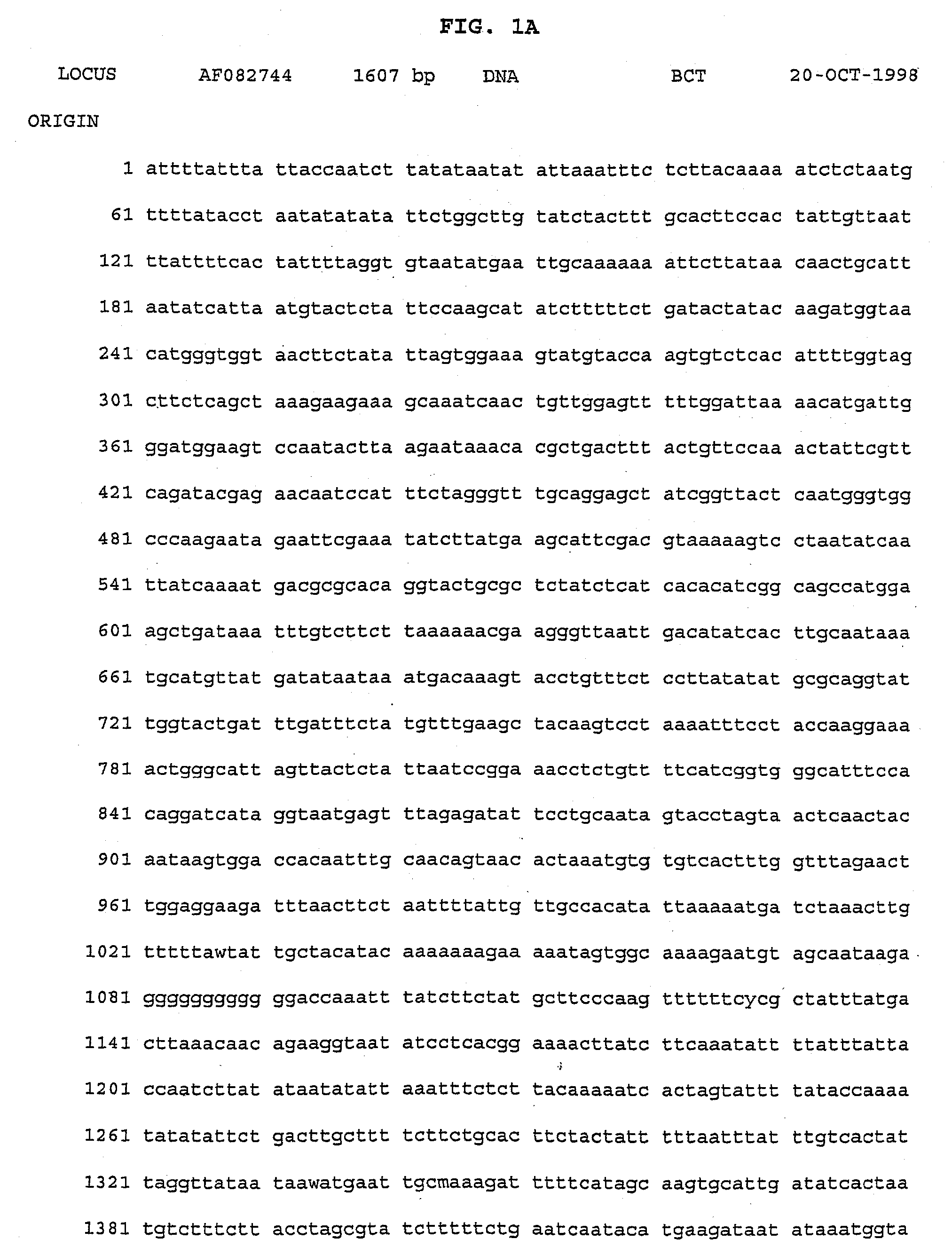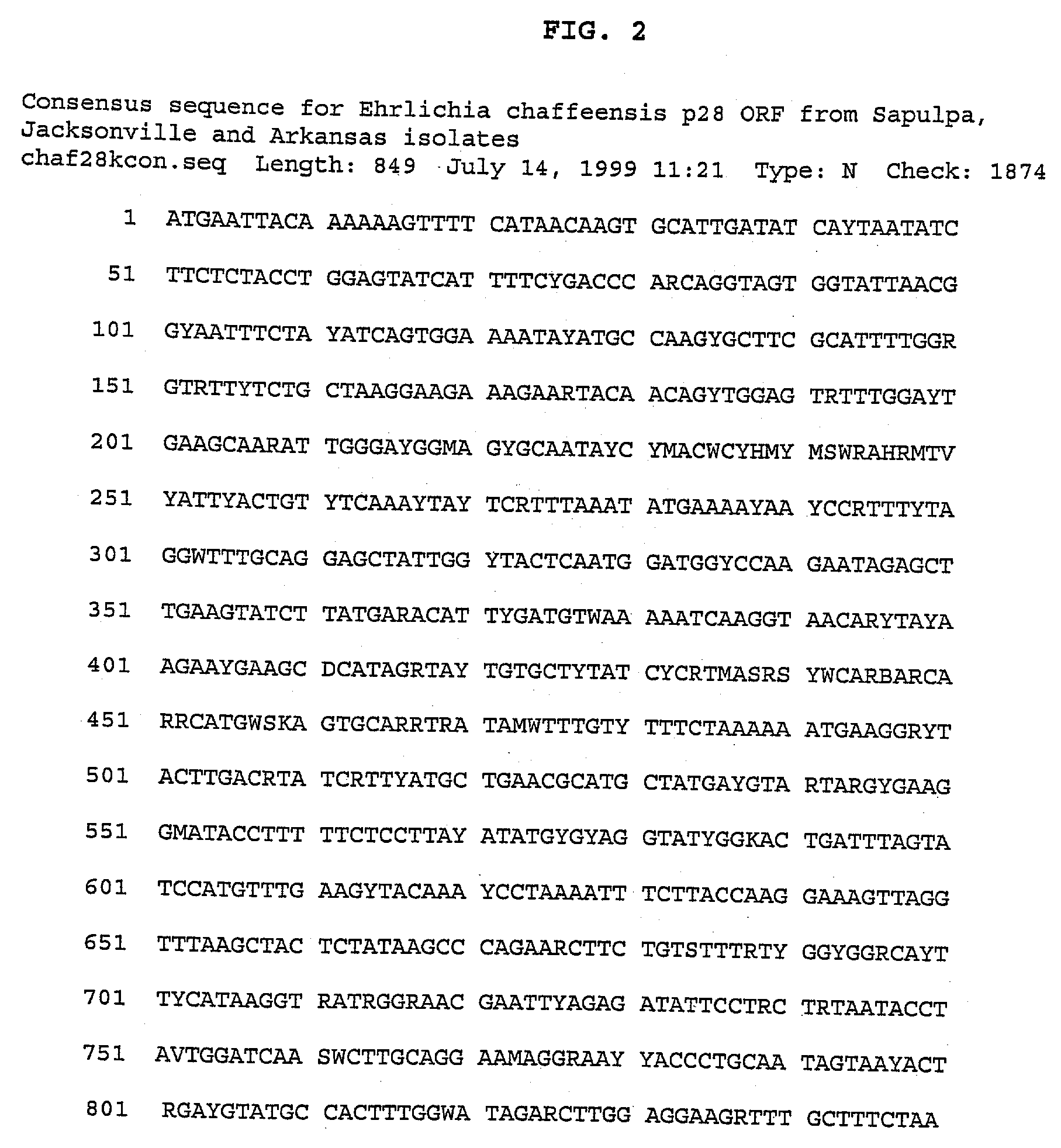Methods for detecting Ehrlichia canis and Ehrlichia chaffensis in vertebrate and invertebrate hosts
a technology of ehrlichia chaffensis, which is applied in the field of methods for detecting ehrlichia canis and ehrlichia chaffensis in vertebrate and invertebrate hosts, can solve the problems of false positives of tests, if a test is conducted without serious limitations, and the dog's infection does not respond well to antibiotics
- Summary
- Abstract
- Description
- Claims
- Application Information
AI Technical Summary
Benefits of technology
Problems solved by technology
Method used
Image
Examples
example 1
A. Obtaining DNA from Blood Samples of Infected Animals
[0038] Two colony-reared Beagle dogs that were seronegative for exposure to E. canis by IFA were inoculated with heparinized blood from a donor dog infected with E. canis (Ebony isolate). Heparinized blood was collected from each animal and split into 0.5 ml aliquots and subjected to the following treatments: (1) DNAzol extraction of buffy coat, (2) DNAzol-BD (Molecular Research Center) extraction of whole blood, (3) DNAzol-BD extraction of buffy coat, (4) spin-column purification of peripheral blood mononuclear cell DNA with a QIAamp Kit (Qiagen) and (5) phenol / chloroform extraction followed by ethanol precipitation of buffy coat samples. All sample preparation methods were done in duplicate and in two trials. Buffy coats were isolated from the heparinized whole blood after centrifugation at 1000×g for 20 min, except for those to be purified with spin-columns, which were isolated after isopycnic centrifugation as described in...
example 2
[0050]E. chaffeensis p28 ORF sequences were compared to identify prospective oligonucleotide primer sequences for a PCR assay. Design of the primers for this PCR assay was similar to that described for E. canis, except that identities of these primers to the three clusters of p28 sequences among the E chaffeensis isolates were also considered by dividing the product of the annealing and E. canis identity scores by the mean of the three E. chaffeensis cluster identity scores. Primers were designed from the E. chaffeensis Arkansas isolate p28 sequence. These primer sequences were aligned with the homologous portions of the E. canis p30 geme and the three p28 clusters and the identity of these sequences determined Total annealing scores, identity to the different p28 clusters and identity to p30 were then used to rank these primer sets. A second approach to primer design involved the design of primers to the consensus sequence of all three E. chaffeensis p28 clusters through less strin...
PUM
| Property | Measurement | Unit |
|---|---|---|
| volumes | aaaaa | aaaaa |
| volumes | aaaaa | aaaaa |
| length | aaaaa | aaaaa |
Abstract
Description
Claims
Application Information
 Login to View More
Login to View More - R&D
- Intellectual Property
- Life Sciences
- Materials
- Tech Scout
- Unparalleled Data Quality
- Higher Quality Content
- 60% Fewer Hallucinations
Browse by: Latest US Patents, China's latest patents, Technical Efficacy Thesaurus, Application Domain, Technology Topic, Popular Technical Reports.
© 2025 PatSnap. All rights reserved.Legal|Privacy policy|Modern Slavery Act Transparency Statement|Sitemap|About US| Contact US: help@patsnap.com



